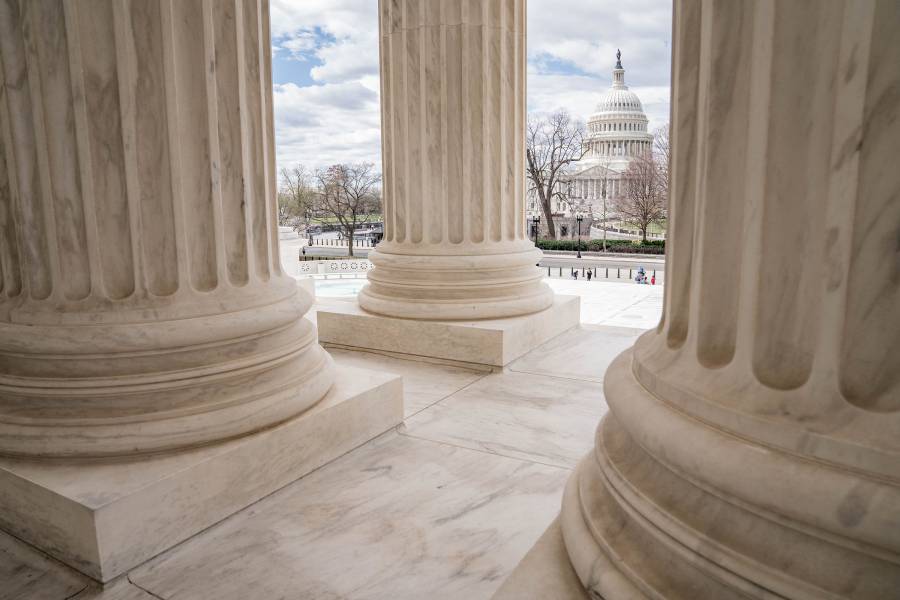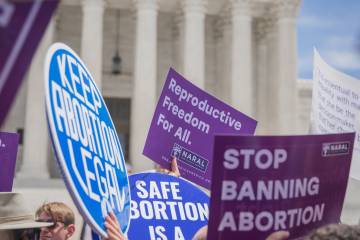- Name
- Johns Hopkins Media Relations
- jhunews@jhu.edu
- Office phone
- 443-997-9009
Monday night, Politico published a leaked draft of a Supreme Court majority opinion that would overturn two precedent-setting cases—Roe v. Wade and Planned Parenthood v. Casey—establishing the right to a safe, legal abortion in America. What comes next is unknown, but there's no mystery surrounding how the anti-choice movement arrived at this moment after years of carefully organized campaigning that took its playbook from the women's suffrage movement, says Dawn Teele, an associate professor of political science at Johns Hopkins University's SNF Agora Institute .
"The biggest issue is that instead of having an agenda that's related to delivering social policies that people want, the Republicans have been very successful in retaining a coalition through the culture wars and through morality politics," Teele says.
The Hub reached out to Teele, whose research interests include women and politics and the causes and consequences of voting rights reform, for insights into how Roe v. Wade came under fire nearly 50 years after it was decided by the Supreme Court.
For so long, Roe v. Wade has been considered settled law and an untouchable precedent. So how did we get here?
One way that people who are anti-choice have been so, so successful is by learning from the lessons of the women's suffrage movement that they needed to take a state-by-state legislative strategy and then focus on the Supreme Court. The pro-choice movement has focused on getting women legislators who support abortion rights into power [at the national level], but the national legislature is not the level at which those rights are decided. Those rights are decided by the states and then by the Supreme Court, because there's no federal legislation related to abortion. So the anti-choice movement has been very successful in going state-by-state for many years as a way to drum up support for the party, which doesn't have much of a social policy outside of morality politics.
It also seems like the rules for Supreme Court appointees have been applied inconsistently depending on which party holds power.
Without the authoritarian power grab of the Republican party during Obama's second term, you wouldn't have had the Supreme Court stacked in the way that it is. At root, this is related to the success of the morality policy of the Republican party, and it's related to the inconsistent application of rules and norms in the House and the Senate. Republicans refused to allow the Democrats, months ahead of the election, to appoint somebody to the Supreme Court after the death of Antonin Scalia. Yet when Ruth Bader Ginsburg died shortly before the November 2020 presidential election, the Republicans were allowed to appoint somebody. The uneven abiding of the rules by the two parties is at the root of why Neil Gorsuch is in Scalia's seat and Amy Coney Barrett is in RBG's seat.
Is there anything opponents can achieve legislatively at this point to safeguard abortion rights while the Democrats hold the presidency, have a majority in the House, and can break a tie in the Senate with a vote from Vice President Kamala Harris?
No. This type of law has long been in the hands of the states. It's always been a matter for either the Supreme Court or a constitutional amendment. The situation is always vulnerable so long as the thing that's really standing in its way is just the Supreme Court. Settled law is not the same thing as a constitutional amendment.
So this could mean that something like marriage equality, also settled by the Supreme Court, could be challenged next.
Correct. It could get knocked off the table, absolutely. So I think this is as bad as everybody's been saying it is. There are many states that are moving—if they have not have already moved—to put [abortion rights] in their own constitutions and in their own sort of statutory rules to allow for abortion. But it obviously just creates more of a problem for women who are less well resourced, less well educated, who are in abusive relationships. And it creates a public health problem because there are cases which prevent the procedure of the abortion, which is the same procedure that's necessary to stop a woman from hemorrhaging if she has a miscarriage. And so you have a problem of a lack of education among health care workers for how to perform basic functions that have saved women's lives for 50 years.
Beyond how we got here, what does this mean for public health and politics going forward? There has already been one case in Texas where a woman was arrested after miscarrying under suspicion that she had an abortion.
America in general is religious and women are taught to have shame about their bodies, and there's not a lot of knowledge and understanding of basic aspects of reproduction, even among people who may work in health care. So the idea that we could have a spontaneous abortion—a miscarriage—is something that is extremely common and can be life threatening because hemorrhages are real. This ruling creates a whole lot of problems because it's going to impact education. It's obvious that the U.S. is moving away from women's health. Education is the number one thing that you need to help pregnancies to occur only when they are wanted. So this is obviously a backward way to go about it.
Posted in Health, Voices+Opinion, Politics+Society
Tagged supreme court, reproductive health, abortion, dawn teele









